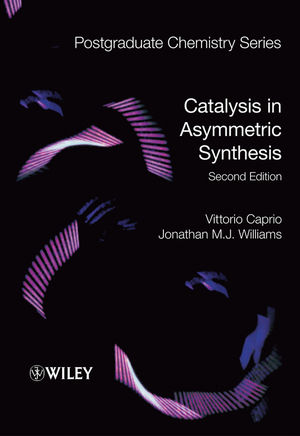Catalysis in Asymmetric Synthesis, 2nd EditionISBN: 978-1-4051-9091-6
Hardcover
408 pages
March 2009, Wiley-Blackwell
 Other Available Formats: Paperback
|
||||||
Lecturer in Organic and Medicinal Chemistry in
the Department of Chemistry, University of Auckland, New Zealand.
His research interests lie in the application of synthetic organic
methods to the synthesis of bioactive natural products of diverse
structure. A central aim is the efficient and elegant syntheses of
target core structures in a stereocontrolled manner using nature as
the source of chirality. The ultimate goal is to use natural
medicines as the basis for designing and synthesizing drugs of
greater therapeutic value.
Professor Jonathan MJ Williams (author of the first edition)
Department of Chemistry, University of Bath, UK
Research involves with the use of transition metals for the synthesis of useful organic molecules. In particular, we have been developing reactions using ‘borrowing hydrogen.’ In this chemistry, ruthenium or iridium catalysts temporarily remove hydrogen to give an aldehyde. This aldehyde then reacts to give an alkene (or imine) and the hydrogen is then returned to give a C-C or C-N bond. These procedures allow alcohols to be used as alkylating agents in place of more conventional, but often toxic/mutagenic alkyl halides.



